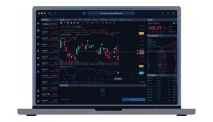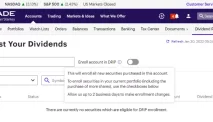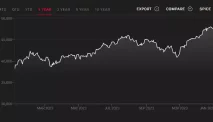For example, the Dow Jones U.S. Mid-Cap Growth Index1, one of the most widely followed mid cap growth indexes, uses three factors to measure growth: sales growth, the ratio of earnings change to price, and momentum. The index includes those Russell Midcap Index companies with relatively higher values for these factors. The index is completely reconstituted annually to ensure that it reflects the true mid cap growth market.
Another example is the Russell Midcap Growth Index2, which is part of the Russell Style Indexes, a comprehensive series of US style indexes that set the industry standard for measuring growth and value stocks. The index uses a multi-variable approach, using book-to-price, I/B/E/S forecast medium-term growth and historical sales per share growth to determine whether a company is part of the growth or value investment universe. The index is also reconstituted annually to ensure that it remains representative and practical.
Other examples of mid cap growth indexes include the S&P MidCap 400 Growth3, which is derived from the S&P MidCap 400 Index and uses three factors to measure growth: sales growth, earnings change to price, and momentum; and the CRSP US Mid Cap Growth Index4, which represents the growth style for companies covering 70% to 85% of cumulative capitalization of the CRSP US Total Market.
Why invest in a mid cap growth index?
Investing in a mid cap growth index can offer several advantages for investors who are seeking higher returns and diversification. Some of the reasons to invest in a mid cap growth index are:
- Higher returns: Mid cap growth stocks have historically delivered higher returns than large cap or small cap stocks, as well as value stocks, over the long term. According to Morningstar, the average annual return of the Dow Jones U.S. Mid-Cap Growth Index from 1996 to 2020 was 12.9%, compared to 10.8% for the S&P 500 Index, 9.9% for the Russell 2000 Index, and 10.4% for the Dow Jones U.S. Mid-Cap Value Index. Mid cap growth stocks tend to benefit from their ability to grow faster than large cap stocks, which are often constrained by their size and market saturation, and more sustainably than small cap stocks, which are often more risky and volatile.
- Diversification: Mid cap growth stocks can also provide diversification benefits for investors who want to reduce their portfolio risk and enhance their risk-adjusted returns. Mid cap growth stocks have a low correlation with other asset classes, such as bonds, commodities, and international stocks, which means that they tend to move independently of them. Mid cap growth stocks also have a moderate correlation with large cap and small cap stocks, which means that they can offer exposure to different market segments and economic cycles. By investing in a mid cap growth index, investors can gain access to a broad and diversified basket of mid cap growth stocks, which can reduce the impact of individual stock volatility and company-specific risks.
- Growth potential: Mid cap growth stocks can also offer growth potential for investors who are looking for companies that can capitalize on emerging trends, new technologies, and untapped markets. Mid cap growth stocks are often in the sweet spot of their industry life cycle, where they have established a competitive advantage and a loyal customer base, but still have room to expand and innovate. Mid cap growth stocks can also benefit from being more agile and adaptable than large cap stocks, which can enable them to respond faster to changing consumer preferences and market conditions. Mid cap growth stocks can also attract more attention and capital from institutional investors, analysts, and media, which can boost their visibility and valuation.
How to invest in a mid cap growth index?
There are different ways to invest in a mid cap growth index, depending on the investor’s preferences, goals, and risk tolerance. Some of the common ways to invest in a mid cap growth index are:
Exchange-traded funds (ETFs)
ETFs are funds that track the performance of an underlying index, such as a mid cap growth index, and trade on an exchange like stocks. ETFs offer a convenient, low-cost, and tax-efficient way to invest in a mid cap growth index, as they allow investors to buy and sell shares of the fund throughout the day, with minimal fees and commissions. ETFs also offer transparency, as they disclose their holdings and prices on a daily basis.






